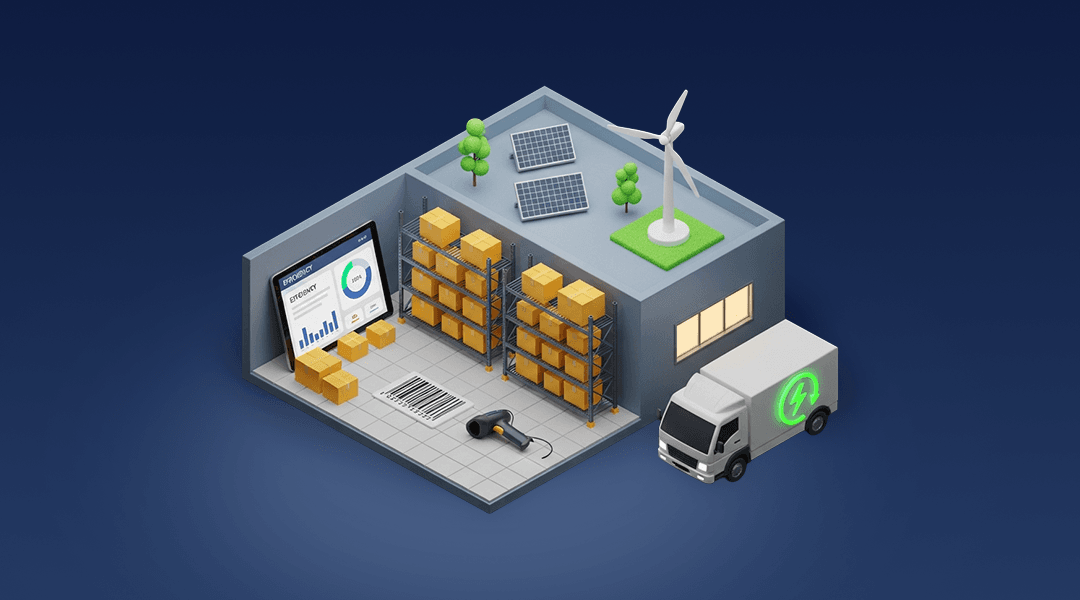Automated Order Fulfillment: Key Tech & Best Practices

Table of Contents
Introduction
E-commerce is no doubt an ever-evolving field that continues to bring immense value to businesses and customers alike. Among its most remarkable changes is automation, which can literally make all the difference one needs -- especially, for companies interested in growth and meeting constantly rising customer expectations. Today, people want fast and efficient deliveries and a seamless experience from the moment they click "buy."
Companies will be left behind in a highly competitive market if they fail to gain traction from this momentum. So many modern technologies have changed the supply chain, such as robotics, artificial intelligence, and even software systems that input automated order fulfillment. These technologies work together to hasten operations, reduce costs, and even eliminate errors, enabling companies to meet the increasing demands without lowering the quality of the products.
This short yet mighty blog by Omnfiul covers what automated order fulfillment is, how it works, and most importantly, its importance to the success of any eCommerce. It also talks about some of the key technologies that are driving this revolution and gives tips on making the right decision in terms of selecting solutions and best practices for smooth implementation.
What is Automated Order Fulfillment?
Defining Automated Order Fulfillment
Automated order fulfillment is the use of technology-based systems through which all the order processes of receiving, processing, and shipping customer orders are fundamentally automated. Such a replacement of manual activity with automated solutions increases speed, reduces error margins, and escalates scalability.
At its heart, automation refers to warehouse robotics for picking and packing, along with software solutions similar to a warehouse management system (WMS) and algorithms that ensure optimal stock management. All this helps manage operations in such a manner that businesses are able to pay more attention to customer needs, considering most of the operations get automated with little to no chance of error.
Automated order fulfillment uses the robotics system to pick up the right product with precision and accuracy, automated packaging machines prepare items for transit, and AI-driven software determines the best shipping methods based on real-time data.
How does Automated Order Fulfillment Work?
Automatic order fulfillment falls under several stages of physical and clerical work activities that are optimized to be efficient and accurate:
- Order Receipt: If the customer places an order online, then the system automatically puts that into an order receipt and begins fulfilling the order immediately.
- Inventory Allocation: The software determines the best warehouse or fulfillment center based on the location of the item and the customer's address.
- Selection: The system or conveyor collects the product from its allocated storage location, operating by sensors and predetermined rules.
- Packaging: Automated systems ensure that products are efficiently and securely packed. Some of these systems even incorporate recycled materials, helping to lower costs while minimizing pollution. Once packed, the label is applied, and the product is prepared for transportation. Many machines use advanced algorithms to optimize shipping routes, reducing the number of shipments needed. This not only streamlines the process but also saves time on order fulfillment.
Why Automate Order Fulfillment?
The Growing Need for Speed in Fulfillment
eCommerce has transformed the way a customer expects things. With the growth of eCommerce, industry giants such as Amazon have made next-day and even same-day deliveries nothing out of the ordinary. A business that cannot keep pace with faster competitors will inevitably lose customers. Automating the fulfillment process helps meet these demands, reducing processing time. A business can remain agile and responsive by implementing a system capable of processing thousands of orders per hour, even during high-pressure periods such as holidays or flash sales.
Let's say, for example, you're not using an automated system. You'll soon realize that delivery times may be delayed due to labor shortages or operational challenges, especially during peak hours. On the other hand, if you had an automated fulfillment center, you'd be able to handle demand peaks quickly and smoothly; see how super helpful it is.
Reducing Human Error and Increasing Accuracy
Manual order processing is vulnerable to a bunch of errors like sending the wrong merchandise, misprinting packages, or any kind of shipping delay. These errors can disappoint the customers and can even turn out to be very expensive in terms of returns, damaging the reputation of your business. With automation, you can practically eliminate all of these errors!
Systems that have installed barcode scanners, RFID tags, and AI algorithms ensure that the right products will be picked, packed, and shipped every time. Besides that, automation keeps careful track of each detail, making it easier to trace and address issues as they may occur.
Key Technologies in Automated Order Fulfillment
Warehouse Robotics
Warehouse robotics are at the forefront of most modern warehouses. They take up repetitive and laborious activities, leaving human workers to take up more strategic activities. Warehouse robotics can be categorized into several types, among them:
- Robotic Arms: They are used for picking, packaging, and palletizing. Heavy or delicate objects can be handled quickly with speed and accuracy.
- Shuttle Systems: Suitable for high-density storage, shuttle systems help in retrieving and putting away items at the highest speed possible, thereby ensuring maximum use of space.
Companies involved in e-commerce, such as Amazon, use very high densities of robot systems within the company's fulfillment centers. The robots pick items off shelves and bring them to packers, thereby reducing the time and labor required in the packing process.
Artificial Intelligence and Machine Learning
Many automated fulfillment systems rely on AI and machine learning technologies. This allows machines to make many different types of decisions based on data analysis to look for trends and optimize their processes. Some of the key applications include:
- Inventory management: It determines demand patterns from historical data and optimizes the stock level.
- Demand Forecasting: Machine learning algorithms enable businesses to prepare for seasonal spikes through analysis of customer behavior and market trends.
- Route Optimization: AI computes the optimal shipping routes to ensure faster delivery times and incur minimum costs, even considering traffic conditions, weather, and other constraints.
Automated Picking and Packing Systems
Picking and packing are among the most labor-intensive processes in order fulfillment. Through the use of high-end sensors and algorithms, automated systems can locate and pack items with much higher efficiency than humans do. This process gets streamlined quite significantly. Among the major advantages that come along with this are as follows:
- Speed: Automated systems are much faster than laborers.
- Cost Savings: Since they reduce the need for human labor, automated systems automatically mitigate costs associated with manpower.
- Sustainability: Most automation optimizes packaging materials for minimal waste and environmental impacts.
Choosing the Right Automated Fulfillment Solutions
Features to Look for in an Automated Fulfillment System
The right automation system depends on the type and kind of business you are running and what are your business's specific goals. Significant features to incorporate include:
- Scalability: The system needs to scale with your business and stay responsive to changes in the volume of orders, particularly with the seasons.
- Integration capabilities: Ideally, it must seamlessly integrate with your e-commerce platform, inventory software, shipping partners, etc.
- Real-time data: Find systems that offer real-time insights into bottlenecks so you can address them.
Top Automated Fulfillment Providers
Here are several leading providers of strong automated fulfillment capabilities:
- Amazon Robotics: Front-runners with current robotics and AI-based technologies.
- Shopify Fulfillment Network: For businesses of all sizes that need smooth integration with a Shopify store
- Ocado Solutions: Grocery fulfillment market leader with outstanding robotic and artificial intelligence solutions in high-profile projects
Investing in research and comparing the above will help you decide on a tailored solution that best fits your needs.
Best Practices for Implementing Automated Order Fulfillment
Gradual Implementation Strategy
Not everything or nothing has to happen at once. A phased approach allows you to test and refine systems before scaling up. Begin with one portion of the fulfillment process, say picking or packing, and then roll out automation from there.
For example, a small company may begin with an automated packing machine. Once the benefits become obvious, they may then add warehouse robotics to speed up picking operations.
Employee Training and Transition
Automation increases efficiency but not the removal of human workers. Workers will have to become versatile, where some will take on functions related to controlling the automated systems, fault tracking, and interpretation of insights derived from data. Comprehensive training regimes should aim at:
- Employee familiarization with new technologies.
- Addressing fear of job loss by emphasizing the human-machine collaboration approach.
- Installation of an innovation culture that makes the staff adapt to change.
Conclusion
Automated order fulfillment is no longer something that can be afforded but rather a necessity in the competitive world of eCommerce. Advanced technologies, such as robotics, AI, and machine learning, have made operations less expensive and more efficient while providing great customer service. The most obvious advantages of automation are speed and accuracy, with fewer errors and lower costs. With changing consumer expectations, not adopting automation and staying competitive is no longer an option—it’s about whether or not you are future ready.
The benefits of automation in terms of increased speed and accuracy, fewer errors, and lower costs speak for themselves. With rising consumer expectations, adopting automation is no longer a competitive issue; it’s about preparing for the future.
Whether you're just starting to implement automation or investing in your organization to transform its fulfillment business entirely, automation has the solutions you need to succeed in the digital age. Implement the right solutions with a thoughtful implementation strategy, and you will meet today’s needs while preparing to face the challenges of tomorrow.
FAQs
1. What is automated order fulfillment and how does it work?
Automated order fulfillment uses technology like robotics, AI, and advanced software to handle processes like order receipt, inventory management, picking, packing, and shipping. It increases speed, reduces errors, and improves scalability, helping businesses meet customer demands more efficiently.
2. What are the key technologies behind automated order fulfillment?
Key technologies include warehouse robotics for picking and packing, artificial intelligence for demand forecasting and route optimization, and machine learning for inventory management. These systems work together to streamline operations, reduce labor costs, and improve accuracy.
3. What are the best practices for implementing automated order fulfillment?
Best practices include starting with a gradual implementation strategy, training employees on new technologies, ensuring system integration, and using real-time data for monitoring and optimization. It’s important to scale gradually and maintain a balance between human workers and automation to ensure smooth transitions and continued efficiency.























